2023 Los Alamos Dynamics Summer School
Team Projects
Project Description
Mentors: Garrison Flynn (E-14), Colin Haynes (E-14), Keegan Moore (University of Nebraska – Lincoln)
Students: Katie Hart, Eddie Lewis, Shanell Sinclair
In many aerospace applications, it is impossible to measure the forces, both aerodynamic and structure-borne, applied to a structure in its service environment. Furthermore, collecting service environment data requires a modified flight structure which accommodates telemetry equipment. Due to the difference in the mechanical impedance of the shaker table and payload, the test structure experiences different loads in the test environment which can lead to over- and under-testing of the structure. Consequently, force-control testing may be a more desirable testing procedure as it more accurately reflects the service environment and eliminates the adverse effects caused by the differences in mechanical impedance. As part of this procedure, a numerical model is required to derive the test forces to replace the acceleration control. Determining these test forces from the model will introduce uncertainty into the flight structure’s response profile. This paper aims to quantify the uncertainty in the determination of the test forces used in the force-controlled test and the uncertainty in the test structure’s response.
Project Team
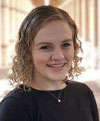 Katie Hart – I am a rising senior at Rice University pursuing a B.S. in Mechanical Engineering along with certificates in Engineering Leadership and Spanish. During her time at Rice, she has held executive leadership positions in the Center for Engineering Leadership (RCEL) as well as the Rice Chapter of the Students for the Exploration and Development of Space (SEDS). Her passion for teaching has led her to serve as a teaching assistant in RCEL, an undergraduate teaching fellow in the Mechanical Engineering department, and head academic fellow at her residential college. Katie is deeply involved in campus ministry from leading small groups Bible studies to participating in various local, national, and international mission opportunities. Her summers in college have included interning with the Southwest Research Institute, studying abroad in Costa Rica, and traveling in South Asia. In addition to her love for travel, she enjoys reading with a cup of tea, being outdoors, and going on adventures with her family and friends.
Katie Hart – I am a rising senior at Rice University pursuing a B.S. in Mechanical Engineering along with certificates in Engineering Leadership and Spanish. During her time at Rice, she has held executive leadership positions in the Center for Engineering Leadership (RCEL) as well as the Rice Chapter of the Students for the Exploration and Development of Space (SEDS). Her passion for teaching has led her to serve as a teaching assistant in RCEL, an undergraduate teaching fellow in the Mechanical Engineering department, and head academic fellow at her residential college. Katie is deeply involved in campus ministry from leading small groups Bible studies to participating in various local, national, and international mission opportunities. Her summers in college have included interning with the Southwest Research Institute, studying abroad in Costa Rica, and traveling in South Asia. In addition to her love for travel, she enjoys reading with a cup of tea, being outdoors, and going on adventures with her family and friends.
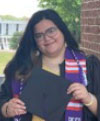 Eddie Lewis - I graduated with a B.S. in Civil Engineering with an emphasis in Structural Engineering from Clemson University in the spring of 2022. She has recently graduated from Clemson University with a non-thesis M.S. in Civil Engineering in the spring of 2023 and is currently working towards a Ph.D. in Civil Engineering at Clemson University with Dr. Laura Redmond. In her undergraduate career, she worked as a tutor through an organization on campus, and the previous summer she worked as an Engineer Intern at Walter P Moore. She is from Chapin, SC, and her hobbies are reading, crocheting, and other various crafts.
Eddie Lewis - I graduated with a B.S. in Civil Engineering with an emphasis in Structural Engineering from Clemson University in the spring of 2022. She has recently graduated from Clemson University with a non-thesis M.S. in Civil Engineering in the spring of 2023 and is currently working towards a Ph.D. in Civil Engineering at Clemson University with Dr. Laura Redmond. In her undergraduate career, she worked as a tutor through an organization on campus, and the previous summer she worked as an Engineer Intern at Walter P Moore. She is from Chapin, SC, and her hobbies are reading, crocheting, and other various crafts.
 Shanell Sinclair – I am a member of two tribes: the Blackfeet (Southern Peigan) tribe in Browning Montana U.S. and the Piikani (Northern Peigan) Tribe in Brocket Alberta CAN. I am currently studying mechanical engineering with minors in aerospace engineering and mechatronics at Montana State University. I have spent my previous summers interning with the Montana Space Grant Consortium on various projects. During the school year I work with the NAS(Native American Studies) department on a grant program called tribal roots geared towards cultural outreach projects. In my free time I enjoy rockhounding, creating various forms of artwork, and spending time with my grandma.
Shanell Sinclair – I am a member of two tribes: the Blackfeet (Southern Peigan) tribe in Browning Montana U.S. and the Piikani (Northern Peigan) Tribe in Brocket Alberta CAN. I am currently studying mechanical engineering with minors in aerospace engineering and mechatronics at Montana State University. I have spent my previous summers interning with the Montana Space Grant Consortium on various projects. During the school year I work with the NAS(Native American Studies) department on a grant program called tribal roots geared towards cultural outreach projects. In my free time I enjoy rockhounding, creating various forms of artwork, and spending time with my grandma.
Project Description
Mentors: John Greenhall (MPA-11), Milo Prisbrey (MPA-11), Bart Raeymaekers (Virginia Tech)
Students: Ruth Hammond, Lexy Murphy, Lindsay Wright
Project Team
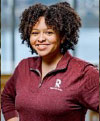 Ruth Hammond – I recently graduated with a B.S. in Mechanical Engineering from the Rose-Hulman Institute of Technology with a minor in Computer Science. She has interned at Oak Ridge National Laboratory, Penn State Applied Research Laboratory, Johnson & Johnson, and IBM Research as a software engineering intern. Last year, she took a "professional gap year" where she studied deep learning and high-performance computing at in Sweden while providing support for leading Swedish supercomputing center. Outside of the classroom, she is passionate about the advancement of tech in sustainability, accessibility, and diversity & inclusion and was recently recognized as an Apple Scholar by Rewriting the Code for her efforts in those areas.
Ruth Hammond – I recently graduated with a B.S. in Mechanical Engineering from the Rose-Hulman Institute of Technology with a minor in Computer Science. She has interned at Oak Ridge National Laboratory, Penn State Applied Research Laboratory, Johnson & Johnson, and IBM Research as a software engineering intern. Last year, she took a "professional gap year" where she studied deep learning and high-performance computing at in Sweden while providing support for leading Swedish supercomputing center. Outside of the classroom, she is passionate about the advancement of tech in sustainability, accessibility, and diversity & inclusion and was recently recognized as an Apple Scholar by Rewriting the Code for her efforts in those areas.
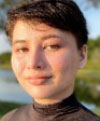 Lexy Murphy – I received a Bachelor of Science in Computer Engineering at Florida International University (FIU) in Spring 2023. My focus during my degree was artificial intelligence, big data, and data system software. During my senior design, I investigated electrodeposited multicolor polymers that would oscillate through the visible light spectrum. I want to pursue graduate school in the future. Outside academia, | enjoy watching movies, trying new places to eat, and exploring the outdoors."
Lexy Murphy – I received a Bachelor of Science in Computer Engineering at Florida International University (FIU) in Spring 2023. My focus during my degree was artificial intelligence, big data, and data system software. During my senior design, I investigated electrodeposited multicolor polymers that would oscillate through the visible light spectrum. I want to pursue graduate school in the future. Outside academia, | enjoy watching movies, trying new places to eat, and exploring the outdoors."
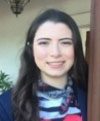 Lindsay Wright – I am a rising senior in Mechanical Engineering at Rice University and have been involved in competitive robotics and went to Australia for an autonomous boat and drone competition in November. I also work as a TA for Rice’s Sophomore Lab, which focuses on thermodynamics. This is my first time at Los Alamos.
Lindsay Wright – I am a rising senior in Mechanical Engineering at Rice University and have been involved in competitive robotics and went to Australia for an autonomous boat and drone competition in November. I also work as a TA for Rice’s Sophomore Lab, which focuses on thermodynamics. This is my first time at Los Alamos.
Project Description
Mentors: Shannon Danforth (E-14), Brittany Ouellette (E-14), John Schultze (E-14)
Students: Tessa Lytle, , Wyatt Saeger, Aiden Tombuelt
Multi-axis testing has gained popularity in the dynamic environments testing community due to its potential to more accurately recreate observed field conditions and reduce test durations. However, the increased sensors and excitation sources necessary for testing in a multi-axis setting add complexity to planning and execution. Two important components of a successful multi-axis test are (1) the ability to run accurate virtual tests to determine the optimal shaker and sensor configuration and (2) a vibration controller that can produce the shaker forces necessary to match the test specification at control locations on the test article. This project aims to evaluate the control capabilities within virtual tests and between virtual and hardware tests for the base section of a Box Assembly with Removable Component (BARC). The Rattlesnake Vibration Controller software developed at Sandia National Laboratories is used to conduct the virtual and hardware tests in this study, and a finite element model (FEM) of the BARC base forms the model for the virtual tests. It is expected that the virtual test’s ability to predict hardware test results will depend on model fidelity, control locations, boundary conditions, and the test specification characteristics. By analyzing how each of these factors contributes to a virtual-to-hardware test pipeline, this study facilitates the development of new vibration control strategies and test planning optimization frameworks.
Project Team
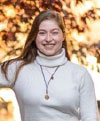 Tessa Lytle – I recently graduated with a B.S. and M.S. in Mechanical Engineering from Worcester Polytechnic Institute and am currently attending Worcester Polytechnic Institute pursuing a PhD in Mechanical Engineering. During the school year, I worked as a graduate learning assistant for Mechatronics and Advanced Engineering Design courses where I helped students with labs and sponsored design projects. Throughout my undergraduate studies, I figure skated on the Haydenettes synchronized ice skating team, competing internationally as a Team USA athlete, and finishing 5th at the 2022 World Championships. In my spare time, I enjoy rock climbing and yoga.
Tessa Lytle – I recently graduated with a B.S. and M.S. in Mechanical Engineering from Worcester Polytechnic Institute and am currently attending Worcester Polytechnic Institute pursuing a PhD in Mechanical Engineering. During the school year, I worked as a graduate learning assistant for Mechatronics and Advanced Engineering Design courses where I helped students with labs and sponsored design projects. Throughout my undergraduate studies, I figure skated on the Haydenettes synchronized ice skating team, competing internationally as a Team USA athlete, and finishing 5th at the 2022 World Championships. In my spare time, I enjoy rock climbing and yoga.
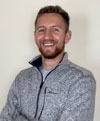 Wyatt Saeger – I am a Post-Bachelor’s student at LANL. In May 2022 I graduated with a Bachelor’s of Science in Mechanical Engineering at the University of New Mexico, where I also was a member of the UNM FSAE racecar design team and an intramural flag football champion. Currently, I have been spending my Post-Bach year gaining experience as a Structural Engineer working with structural analyses of smaller systems. Outside of work I like to go hiking, play sports, and play video games.
Wyatt Saeger – I am a Post-Bachelor’s student at LANL. In May 2022 I graduated with a Bachelor’s of Science in Mechanical Engineering at the University of New Mexico, where I also was a member of the UNM FSAE racecar design team and an intramural flag football champion. Currently, I have been spending my Post-Bach year gaining experience as a Structural Engineer working with structural analyses of smaller systems. Outside of work I like to go hiking, play sports, and play video games.
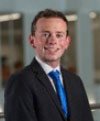 Aiden Tombuelt – I am a junior Mechanical Engineering major at Clemson University with a minor in Physics. I am currently pursuing a Departmental Honors degree through my fatigue testing research on a Bulk Metallic Glass material. I am the president of Engineering Without Borders, and involved with Clemson Experimental Forest Trail Runners, Tau Beta Pi, and Grand Challenge Scholars. In my free time, I enjoy training for endurance races and reading many books.
Aiden Tombuelt – I am a junior Mechanical Engineering major at Clemson University with a minor in Physics. I am currently pursuing a Departmental Honors degree through my fatigue testing research on a Bulk Metallic Glass material. I am the president of Engineering Without Borders, and involved with Clemson Experimental Forest Trail Runners, Tau Beta Pi, and Grand Challenge Scholars. In my free time, I enjoy training for endurance races and reading many books.
Project Description
Mentors: Zig Hampel-Arias ( ), Jeff Tippmann ( )
Students: Anthony Petrakian, Parker Segelhorst, Abby Smith
Project Team
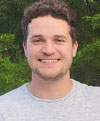 Anthony Petrakian – I am a senior studying Mechanical Engineering at Texas A&M University. Currently, my research involves experimentally characterizing the effect rotation has on the vibrational properties of cantilever beams. I have already been accepted and will be attending Texas A&M for graduate school as well, with a focus in dynamics and controls. Outside of class, I enjoy working out, hanging out with my friends, and skiing.
Anthony Petrakian – I am a senior studying Mechanical Engineering at Texas A&M University. Currently, my research involves experimentally characterizing the effect rotation has on the vibrational properties of cantilever beams. I have already been accepted and will be attending Texas A&M for graduate school as well, with a focus in dynamics and controls. Outside of class, I enjoy working out, hanging out with my friends, and skiing.
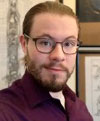 Parker Segelhorst – I am currently pursuing a B.S. in Computer Engineering at Colorado State University and work as the Lab Technician Supervisor for the College of Engineering at Colorado State University, where I lead a group of technicians in charge of maintaining equipment, operating systems, and engineering software across all the College of Engineering lab computers. During the school year, also works as a teaching assistant for Circuit Theory Applications where I help students develop the fundamental skills necessary to analyze linear circuits in various domains. In my free time, I also enjoy playing music, working on programming/microcontroller projects, and building Legos.
Parker Segelhorst – I am currently pursuing a B.S. in Computer Engineering at Colorado State University and work as the Lab Technician Supervisor for the College of Engineering at Colorado State University, where I lead a group of technicians in charge of maintaining equipment, operating systems, and engineering software across all the College of Engineering lab computers. During the school year, also works as a teaching assistant for Circuit Theory Applications where I help students develop the fundamental skills necessary to analyze linear circuits in various domains. In my free time, I also enjoy playing music, working on programming/microcontroller projects, and building Legos.
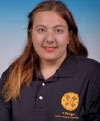 Abby Smith – I just finished my junior year in Mechanical Engineering at Michigan Technological University and am currently the president of her university’s American Railway Engineering and Maintenance-of Way Chapter, and the programming director of the campus radio station. The past two summers I worked for the Naval Surface Warfare Center in Crane, Indiana in the Global Navigation and Position Systems department working with sonar technology for submarines. In the future I hope to continue my education and pursue a career in government. In my free time, I like to read, workout, and do crafts.
Abby Smith – I just finished my junior year in Mechanical Engineering at Michigan Technological University and am currently the president of her university’s American Railway Engineering and Maintenance-of Way Chapter, and the programming director of the campus radio station. The past two summers I worked for the Naval Surface Warfare Center in Crane, Indiana in the Global Navigation and Position Systems department working with sonar technology for submarines. In the future I hope to continue my education and pursue a career in government. In my free time, I like to read, workout, and do crafts.
Project Description
Mentors: Peter Fickenwirth (E-14), Thomas Thompson (E-14), Sandra Zimmerman (E-14)
Students: Tharwat Elkabani, Celvi Lisy, Gerrit Vander Wiel
Baseline field data is used as an input for random environmental testing in both single and multi-axis tests. The structure analyzed in vibration tests was the Box Assembly with Removable Component (BARC) developed at Sandia National Laboratory and Kansas City National Security Campus, as a benchmark for nonlinear dynamic testing. Random field data was gathered by transporting the BARC structure in a vehicle across bumpy roads. Metrics must be developed to compare single-axis and multi-axis tests to quantitatively represent advantages and disadvantages seen in single-axis and multi-axis for a given experimental setup. This project seeks to develop metrics that effectively and quantitatively compare the fidelity of dynamic environmental testing methods. Potential metrics for comparing tests include fatigue damage spectrum (FDS), root mean square (RMS), and power spectral density (PSD). These metrics should encompass the success of the test at control locations as well as uncontrolled locations and in different frequency ranges tested.
Project Team
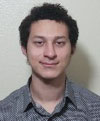 Tharwat Elkabani – I am a senior undergraduate in Mechanical & Aerospace engineering at New Mexico State University. I work on vibrations and environmental testing of structures in the Nonlinear Dynamics and Energy Harvesting Laboratory at NMSU. I was a first-time attendee of the IMAC conference in February 2023 where I learned about a lot of new innovations in the field of structural dynamics. I plan to graduate in the spring of 2024. After graduation, I plan to pursue a Master’s Degree in Mechanical Engineering with a focus in vibrations. My interests include nonlinear dynamics, structural testing, and aeroelasticity. In my free time, I enjoy playing video games, doing sports like soccer and basketball, and going out with friends.
Tharwat Elkabani – I am a senior undergraduate in Mechanical & Aerospace engineering at New Mexico State University. I work on vibrations and environmental testing of structures in the Nonlinear Dynamics and Energy Harvesting Laboratory at NMSU. I was a first-time attendee of the IMAC conference in February 2023 where I learned about a lot of new innovations in the field of structural dynamics. I plan to graduate in the spring of 2024. After graduation, I plan to pursue a Master’s Degree in Mechanical Engineering with a focus in vibrations. My interests include nonlinear dynamics, structural testing, and aeroelasticity. In my free time, I enjoy playing video games, doing sports like soccer and basketball, and going out with friends.
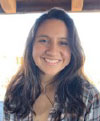 Celvi Lisy – I recently graduated with a B.S. in Mechanical Engineering from Olin College of Engineering and am planning on pursuing a PhD in Aerospace Engineering in the Fall. At Olin, Ii was one of the founding members and ultimately the lab manager of the Olin Satellite + Spectrum Technology and Policy Group (OSSTP) and the Structures Lead for the SWARM-EX CubeSat mission. I am passionate about space sustainability and hope to research on-orbit servicing, post-mission disposal, and debris removal in my graduate studies. In my spare time, I enjoys running, hiking, and most things outdoors!
Celvi Lisy – I recently graduated with a B.S. in Mechanical Engineering from Olin College of Engineering and am planning on pursuing a PhD in Aerospace Engineering in the Fall. At Olin, Ii was one of the founding members and ultimately the lab manager of the Olin Satellite + Spectrum Technology and Policy Group (OSSTP) and the Structures Lead for the SWARM-EX CubeSat mission. I am passionate about space sustainability and hope to research on-orbit servicing, post-mission disposal, and debris removal in my graduate studies. In my spare time, I enjoys running, hiking, and most things outdoors!
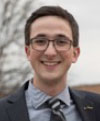 Gerrit Vander Wiel – I am a rising senior at LeTourneau University in Longview, Texas studying mechanical engineering. While at LeTourneau, I have enjoyed running experiments for material characterization of novel aerogel materials for cryogenic applications. I have spent the last two summers working for the W-13 advanced engineering analysis group at Los Alamos National Lab where I learned finite element analysis of structures and presented the findings at the LANL Student Symposium. I am looking to pursue graduate school after earning my B.S. in Mechanical Engineering. I enjoy cycling, trail running, ultimate frisbee, and playing the piano.
Gerrit Vander Wiel – I am a rising senior at LeTourneau University in Longview, Texas studying mechanical engineering. While at LeTourneau, I have enjoyed running experiments for material characterization of novel aerogel materials for cryogenic applications. I have spent the last two summers working for the W-13 advanced engineering analysis group at Los Alamos National Lab where I learned finite element analysis of structures and presented the findings at the LANL Student Symposium. I am looking to pursue graduate school after earning my B.S. in Mechanical Engineering. I enjoy cycling, trail running, ultimate frisbee, and playing the piano.
Project Description
Mentors: Luke Beardslee (E-6), Carly Donahue (E-6)
Students: Andrew Jensen, Will Redford, Nimran Shergill
Project Team
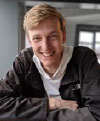 Andrew Jensen– I am a first year master’s student in the Structural Engineering and Mechanics program at Stanford University. My time as an undergraduate started at College of Marin before I transferred to UC Berkeley, where I graduated with a degree in Civil Engineering. As a graduate student, I’m primarily focused on topics related to structural health monitoring and risk evaluation, and I will be applying to PhD programs during the upcoming fall 2023 admissions cycle. Beyond engineering, I love traveling, learning about history, tackling new languages, and spending time with friends and family.
Andrew Jensen– I am a first year master’s student in the Structural Engineering and Mechanics program at Stanford University. My time as an undergraduate started at College of Marin before I transferred to UC Berkeley, where I graduated with a degree in Civil Engineering. As a graduate student, I’m primarily focused on topics related to structural health monitoring and risk evaluation, and I will be applying to PhD programs during the upcoming fall 2023 admissions cycle. Beyond engineering, I love traveling, learning about history, tackling new languages, and spending time with friends and family.
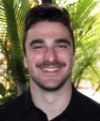 Will Redford – I am currently a 3rd year studying Mechanical Engineering with a concentration on robotics at the Georgia Institute of Technology. My research currently has to do with the mechanical design of marine robotic systems, and separately on the spread of sargassum in the Caribbean Sea. I plan to continue doing research in graduate school after I receive my undergraduate degree in 2024. Outside academics, I am the coach of the club swim team at Georgia Tech, and love ice hockey, boxing, and being outdoors.
Will Redford – I am currently a 3rd year studying Mechanical Engineering with a concentration on robotics at the Georgia Institute of Technology. My research currently has to do with the mechanical design of marine robotic systems, and separately on the spread of sargassum in the Caribbean Sea. I plan to continue doing research in graduate school after I receive my undergraduate degree in 2024. Outside academics, I am the coach of the club swim team at Georgia Tech, and love ice hockey, boxing, and being outdoors.
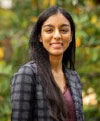 Nimran Shergill – I am a rising senior studying Mechanical Engineering at Yale. I am currently an undergraduate research assistant at the Faboratory where I work on a soft robotic gripper outreach project. I am also part of an interdisciplinary project where I study crabs and examine the mechanical properties and tradeoffs between their different claw morphologies and durophagies. I am interested in robotics, medical device design, and engineering with a broader impact. Outside of research, I run a super fun outreach organization called Yale Funbotics, where I work with middle school students who build robots and compete in a cone-stacking competition. In my free time, I enjoy reading, creative writing, and playing video games.
Nimran Shergill – I am a rising senior studying Mechanical Engineering at Yale. I am currently an undergraduate research assistant at the Faboratory where I work on a soft robotic gripper outreach project. I am also part of an interdisciplinary project where I study crabs and examine the mechanical properties and tradeoffs between their different claw morphologies and durophagies. I am interested in robotics, medical device design, and engineering with a broader impact. Outside of research, I run a super fun outreach organization called Yale Funbotics, where I work with middle school students who build robots and compete in a cone-stacking competition. In my free time, I enjoy reading, creative writing, and playing video games.
Project Description
Mentors: Adam Wachtor, Brandon Wilson
Students: Cade Engen, Philip Root
Project Team
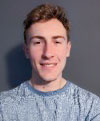 Cade Engen – I am a senior at Michigan Technological University pursuing a B.S. in Mechanical Engineering and a minor in Electrical Engineering. During the school year, I spend most of my time on the Formula SAE race team where they design and build a car to compete each year. I also work as a math learning coach where I tutor engineering students in all required math courses. In my spare time, I enjoy mountain biking, snowmobiling, and fishing.
Cade Engen – I am a senior at Michigan Technological University pursuing a B.S. in Mechanical Engineering and a minor in Electrical Engineering. During the school year, I spend most of my time on the Formula SAE race team where they design and build a car to compete each year. I also work as a math learning coach where I tutor engineering students in all required math courses. In my spare time, I enjoy mountain biking, snowmobiling, and fishing.
 Philip Root – I recently completed my Junior year at the University of Notre Dame and am pursuing a bachelor’s degree in Mechanical Engineering with a concentration in Control and Mechanical Systems and a minor in Computational Engineering. I work as a teaching assistant in a homework help room for Dynamics, Solid Mechanics, and Thermodynamics classes and as a research assistant on a laser powder bed fusion printer project. Last summer I studied abroad in Italy and worked as a research assistant for a metamorphic manufacturing project. In my spare time, I enjoy snowboarding, watching movies, and completing COD Zombies’ easter eggs.
Philip Root – I recently completed my Junior year at the University of Notre Dame and am pursuing a bachelor’s degree in Mechanical Engineering with a concentration in Control and Mechanical Systems and a minor in Computational Engineering. I work as a teaching assistant in a homework help room for Dynamics, Solid Mechanics, and Thermodynamics classes and as a research assistant on a laser powder bed fusion printer project. Last summer I studied abroad in Italy and worked as a research assistant for a metamorphic manufacturing project. In my spare time, I enjoy snowboarding, watching movies, and completing COD Zombies’ easter eggs.
LA-UR: 23-32657.



